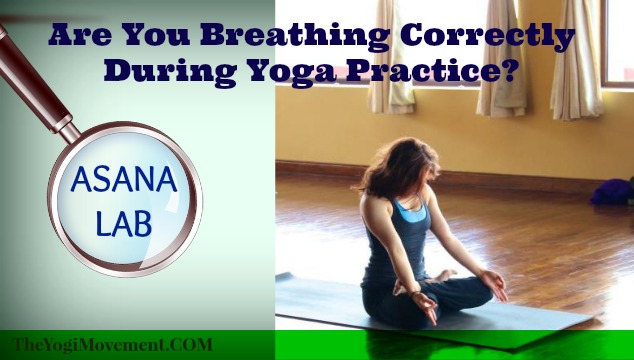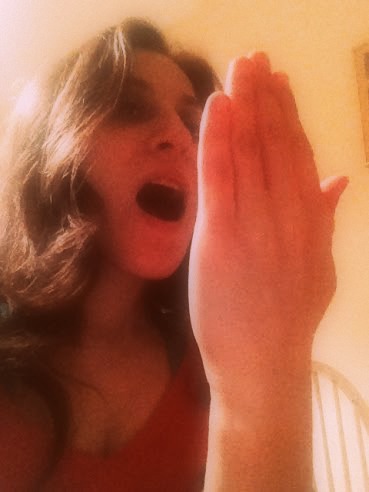Quick Note: There are many breathing methods for practicing yoga. This one is primarily for the Ashtanga practice, and it’s also good for beginners to expand breath and breath awareness.
The most important aspect while practicing yoga is the breath. When we practice yoga postures, the action we take is called, vinyasa, which means breath linked with movement.
All we are doing is creating shapes, but how we breathe in those shapes – that is the yoga. Can we create calmness in every shape we make no matter how difficult? Can we create calmness even during some constriction or discomfort? Can we create calmness even when we’re pushing the edge? How can you create space to breathe? That is the yoga. The yoga is how we work through the challenges and react to them. Yoga is doing the postures with consciousness and awareness.
We connect to this consciousness primarily through our breath.
Once your breath is lost – once you grunt, once your breath feels constricted, once you no longer have control over the breath – then it’s important to find that space (which may be to pull back a little and observe) in your practice to bring yourself back to a calm breath and place.
When the awareness goes and the intention becomes about the posture; the yoga is lost. When your mind wonders and it becomes about what you have to do later, or about how you don’t like someone you work with; the prana (energy you’ve built) has gone out the door!
Yoga is not easy. It’s extremely challenging and can be taxing on the body, so there will be times when your breath and mind will fluctuate. That’s human. Honor that. Forgive yourself.
What is important is that you treat yourself with compassion and that you keep awareness. If your mind wonders, bring it back. If you get frustrated about a posture, observe your emotions, let it go, and move on. Then, as time goes on, you can find ways to let go of those imprints, and you will eventually find ways to create calmness in those situations.
What is your goal? Are you trying to get into a posture? Are you trying to prove something? Or, when you find yourself challenged and constricted are you trying to find peace and balance?
Before even starting the yoga postures, we have to learn correct breathing. Are you ready? Good! let’s start here:
Part 1 – Meditation Posture
A. Sit in a comfortable seated cross legged position
B. Set your hands on your knees or place them in your lap.
C. Make sure your spine is straight.
D. Make sure your body is firm and activated. Don’t let your arms dangle or your head hang down, sit up and be your own buddha
E. The breath is only through the nose through the whole practice until you get to final resting posture.
F. You want to breathe from the back of your throat, and you should be able to HEAR IT.
G. The breath should be so loud that it drowns out your thoughts and everyone around you.
Part 2 – The Prep Breath
A. Hold your hand in front of you and pretend it’s a mirror. Take a big inhale, and exhale with your mouth open making a whisper sound like you’re fogging the mirror. It should sound like: “Haaaaaaaaaaaaaaaaaahhhhhh”.
B. Next, Inhale with the mouth open making that same sound, but just bringing it inward.
Part 3 – The YOGA Breath
A. Close the mouth, and breath through the nose with control and steadiness continuing to make the haaaaaahhh sound as you inhale and exhale. You’re doing the same breath; just with the mouth closed. Once you hear it loud and clear, that is the breath!
B. Bring it up from deep within your belly and picture it moving up your spine through the crown of your head
C. Then, let it move down the same way through the base of the spine into the earth
D. The breath should be steady, so the inhales and exhales should be the same length. Try for 5 counts inhale / 5 counts exhale
Some notes & fun facts about the breath in Yoga practice:
A. The breath creates energy to carry us through the practice, and creates an internal heat to detox. This is why we breathe through the nose. Pay attention to how the breath feels when it moves in your nostrils. It should feel cool going in and warm coming out.
B. Each movement will last a full breath. As you practice, you’ll begin to find ways to slow down the movement so that it lasts the full breath. Surya Namaskara (Sun Salutations) are great for exploring the breath with the movement.
C. Every movement you are either inhaling or exhaling.
D. The breath is never held, but a constant flow of inhalation and exhalation
E. Never rush the movement. Always let the breath carry you through the practice.



[…] 2. Just start to create breath as if do during your practice (see here) […]